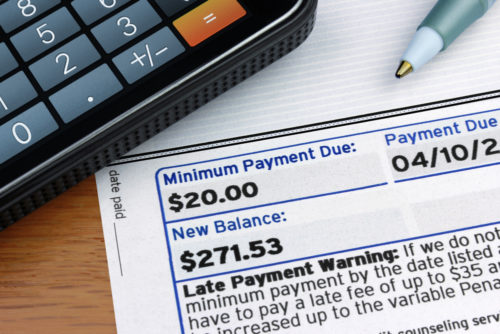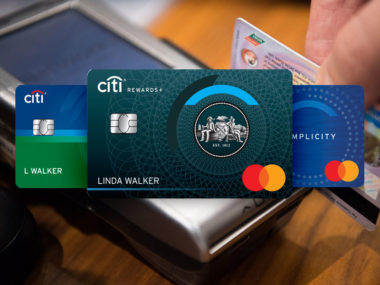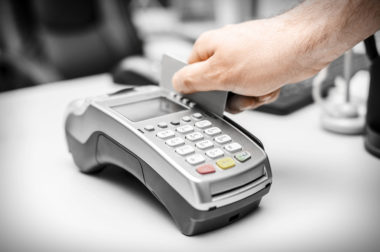Credit cards can be complicated to learn about, but the definition of a minimum payment is simple: it is the lowest amount of money your card issuer allows you to pay by the due date without charging you a late fee.
Minimum payments vary between institutions and organizations. For instance, one card might carry a flat minimum amount each month, while another will require you to pay a percentage of your overall balance.
It’s tempting only to pay the minimum every cycle. If your card issuer only requires you to pay $30 of your $2,000 balance, why would you pay more when you can pay it off later? This thinking is dangerous, though. While making the minimum payment every month reflects positively on your credit score, all you are avoiding are the late fees. You will still need to pay off your total debt eventually, plus interest rates that accumulate over time.
Table of Contents
Why Is a Minimum Payment Important?
Minimum payments are essential not just because they help you avoid late fees, but because they deter lenders from increasing your interest rates. Failing to make a minimum payment every month, from a card issuer’s point of view, makes you more of a financial risk. They may feel inclined to charge you more interest to pressure you to pay on time, and better offset their losses from the money they have lent you.
Card issuers typically use one of the following methods to calculate your minimum payment:
- Flat percentage: Some lenders charge you a percentage of your overall statement balance, fees and interest included. This number is generally between 1% and 3%. Your payment would be $90, for instance, if you owe a total balance of $3,000 with a 3% minimum payment.
- Combination: Other lenders use a smaller percentage of your total balance, but they add the fees and interest that accrued over the statement period. You may owe 1% of your $3,000 balance, plus a late fee of $27 if you missed the due date, for example, and whatever amount you owe in interest.
Your credit card issuer will inform you how it calculates your minimum payment when you apply for the card itself and when it mails you your cardholder agreement. Each subsequent bill should also detail what your particular minimum payment is for that month.
Some card issuers will charge a fixed amount if your balance is low. U.S. News and World Report notes that Capital One charges overdue amounts plus $25 (or the total statement balance if it is less than $25), or 1% of your balance plus new interest and fees, whichever is greater.
Making a Minimum Payment
You have multiple options for paying a minimum payment or your total credit card bill, such as:
- Over the phone: You can call your bank or card issuer and provide them with your account details. Inform the customer service representative how much you intend to pay.
- By mail: You can write a physical check and mail it in each month. Your card statement should include an address and information regarding who to make the check out to (especially if you still receive mailed paper statements).
- Online: The easiest method to pay your credit card bill is online. Most card issuers offer some form of online banking where you can review your account balances, credit card statements, transfer money, connect other accounts, and make payments. You can choose to pay your credit card bill manually each month, or you can set your account to autopay and never miss a due date.
If you decide to autopay, then it is still wise to check your statements every month for fraud. Set the payment date a few days before the due date to give yourself time to fix potential issues. You can determine how much to autopay, such as the minimum payment, a pre-set amount, or, preferably, your new statement balance.
Should You Pay the Minimum or More?
You might be able to get away with only paying your minimum payment if you don’t have much debt, but it’s almost always wiser and more practical to pay more than the minimum. Paying only the minimum each month will result in you paying much more than you initially owed due to interest rates, and you’ll be in debt for longer than you want to be.
Let’s say you have a balance of $6,000 on a single credit card. If this card has an interest rate of 15% and a minimum payment of 3%, then your minimum monthly payment will be $180. Paying only this $180 will take you 184 months (15 years and four months) to pay off your debt, and you will pay a total of $10,079.38 — $4,079.38 more than you originally owed.
This amount and time frame is, of course, not acknowledging the fact that you will need to make other purchases. You have regular bills to pay, and expensive emergencies arise. Paying off debt as quickly as possible necessitates paying more than the minimum amount.
Consequences of Missing a Minimum Payment
Missing a minimum payment will always result in a late fee. Your card issuer might decide to file a report with the three major credit bureaus if your payment is late by 30 days or more. As mentioned previously, the card issuer may also penalize you with a higher annual percentage rate (APR) if your payment is later than 60 days, which can be as high as 29.99%. You could also lose your promotional APR if the issuer is offering you a lower rate.
Credit history is a significant component of your credit score, so if your credit card issuer does decide to report the late payment to the credit bureaus, then it could damage your score. Credit utilization is another sizable factor, which is why it’s advantageous to pay more than the minimum every month so that your utilization ratio does not increase as you accrue more debt.
It is imperative to pay at least your credit card’s minimum payment every month. Doing so will prevent you from facing late fees, but it’s in your best interest to learn how to use credit cards wisely so that you can avoid as much debt as possible.
Image Source: https://depositphotos.com/





